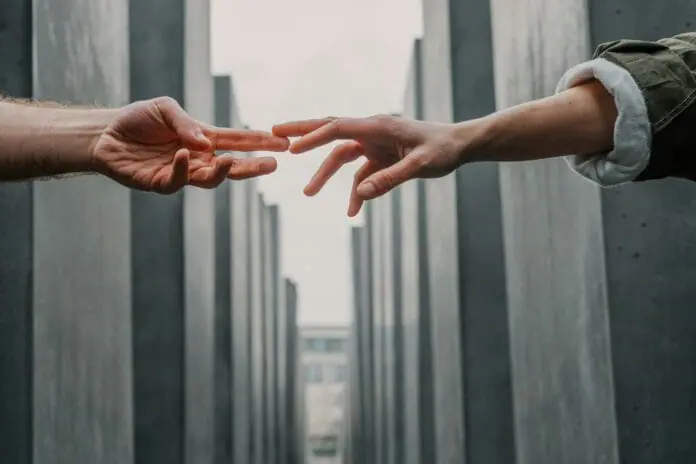Past Lives (2023), written and directed by Celine Song, is a beautiful, nostalgic and heartbreaking film. The movie opens with the sounds of a restaurant, clattering dishes and a crowd.
Three people, lit by the glow of warm yellow light, take up the frame. The opening line and the central question of the movie is the same: “Who do you think they are to each other?”
Lovely, hopeful and a little awkward
After the first scene, the movie jumps back 20 years. We meet Na Young (Greta Lee) and Hae Sung (Teo Yoo), two 12-year-olds in Seoul, Korea who are in love, in the joyous lovesick way of children. Their friendship is cut short when Na Young’s family immigrates to Canada.
12 years later, Hae Sung and Na Young—now Nora—reconnect over Facebook. We see the tenderness of a long-distance relationship; staying up to talk, shaping your life around different time zones, the emotional disconnect caused by lagging video calls and the intimacy that grows from talking for hours.
New York and Seoul become central characters in the story. Hae Sung in Seoul represents traditional Korean Culture, while Nora in New York portrays the immigrant dream. The tension between the two is partially representative of the tension between two ideals.
They are grounded in their city lives. Hae Sung and Nora both decide to further their careers instead of visiting each other—they don’t risk choosing each other.
The core of the movie begins another 12 years later when Hae Sung finally comes to visit Nora in New York. The moment they meet is lovely, hopeful and a little awkward.
The camera is patient, enabling the audience to recognize each emotion. This movie does not shy away from the full expression of any moment. This is a story told through long glances, hand placements and the space between bodies. The camera acts as narrator, its sweeping shots showing the audience truths that the characters don’t yet fully understand.
In this movie, nostalgia is love by another name
The three main characters, Hae Sung, Nora and Nora’s husband Arthur (John Magaro) circle each other. Each scene pulls them apart emotionally, only to bring them back together again. Woven throughout the movie is the Korean idea of In-yun, which means fate.
In-yun is singularly connected to the relationships between people. It’s In-yun when two people walk along the street and their clothes brush accidentally, they must have had something between them in a past life. If two people get married, it’s because there are 8,000 layers of In-yun over 8,000 lifetimes.
The In-yun between Nora and Hae Sung is palpable. They have a singular relationship, and the nostalgia of their relationship seeps through the screen; it’s so tangible and close to the surface. Greta Lee and Teo Yoo portray this connection masterfully.
They convey so much through minute facial expressions and the careful way they interact with each other. In this movie, nostalgia is love by another name.
We are connected in this life and the next
Partway through the film, Arthur, in the middle of the night, asks Nora if she is happy with her life. She replies, “This is where I ended up. This is where I am supposed to be.” It’s heart-wrenchingly practical. While the cinematography allows for a beautiful aesthetic, the film is also solidly grounded in reality. The story, like Nora, is clear-eyed.
The depiction of Nora’s relationships is nuanced. On one hand, Hae Sung knows Nora intimately. We are our truest selves as children. The people who love us first forever have a hold on who we are. Nora and Hae Sung’s relationship is awkward, gentle and sweet. Their love is one spoken in Nora’s mother tongue, a language (and love) that doesn’t settle comfortably on her lips anymore and yet still feels like home.
However, the film is unequivocal: Nora has evolved. Arthur brings the viewer back to reality—he is Nora’s life. At one point, Arthur half-jokingly asks Nora if she is going to run away with Hae Sung. Laughing, she replies “Do you even know me?” The camera settles on Arthur, as he earnestly declares “I know you.” Arthur does know Nora as she is now, an adult, a woman in the world. They have a life together.
At the beginning of the film, the restraint between Hae Sung and Nora is all tension and questions. By the end of the film, the space between their bodies suggests a melancholic understanding. While presented as a typical love triangle—Past Lives is more nuanced. The metaphor of In-yun allows a tenderness to exist between characters. We are connected, in this life and the next.
This movie made me sob. I give it five stars.


Recent Comments